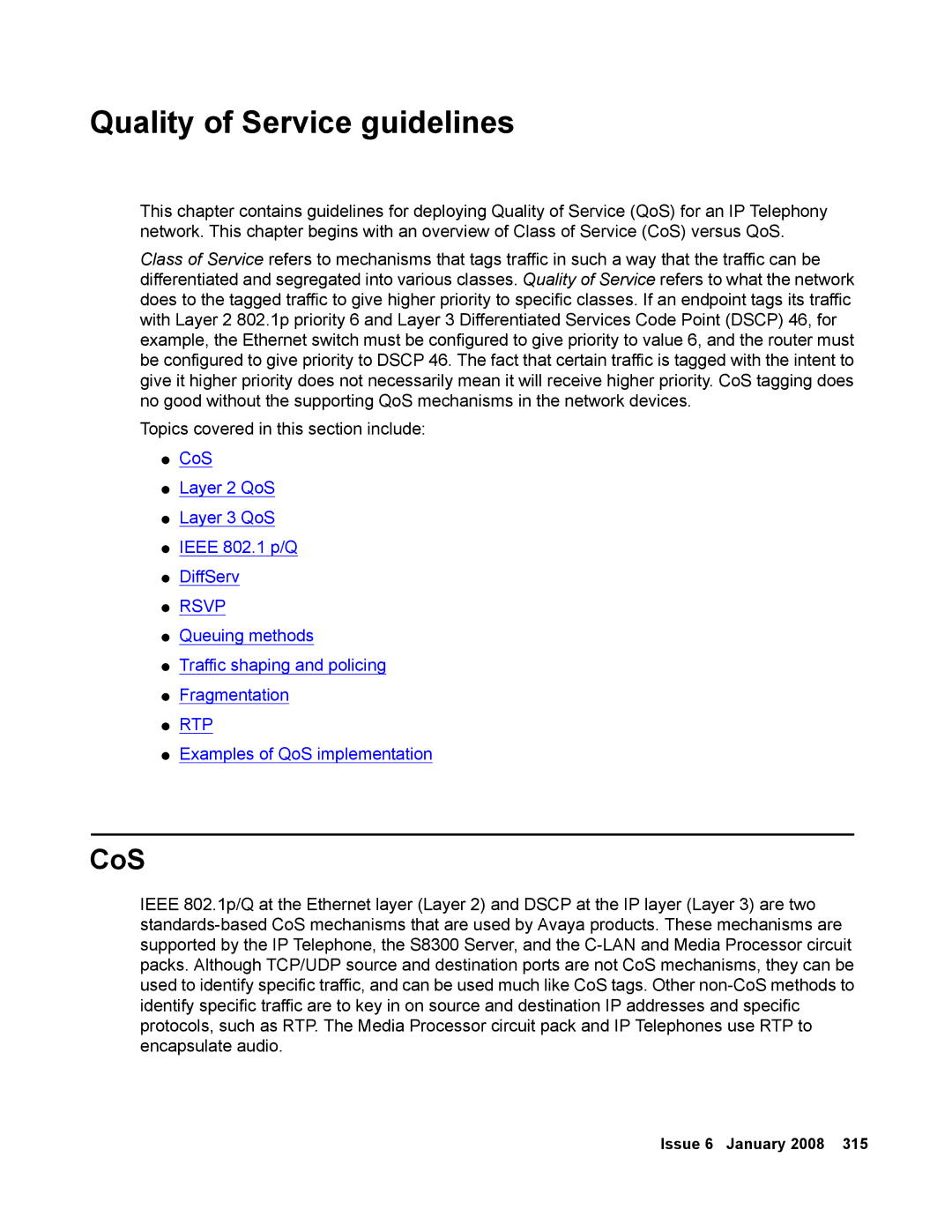Quality of Service guidelines
This chapter contains guidelines for deploying Quality of Service (QoS) for an IP Telephony network. This chapter begins with an overview of Class of Service (CoS) versus QoS.
Class of Service refers to mechanisms that tags traffic in such a way that the traffic can be differentiated and segregated into various classes. Quality of Service refers to what the network does to the tagged traffic to give higher priority to specific classes. If an endpoint tags its traffic with Layer 2 802.1p priority 6 and Layer 3 Differentiated Services Code Point (DSCP) 46, for example, the Ethernet switch must be configured to give priority to value 6, and the router must be configured to give priority to DSCP 46. The fact that certain traffic is tagged with the intent to give it higher priority does not necessarily mean it will receive higher priority. CoS tagging does no good without the supporting QoS mechanisms in the network devices.
Topics covered in this section include:
●CoS
●Layer 2 QoS
●Layer 3 QoS
●IEEE 802.1 p/Q
●DiffServ
●RSVP
●Queuing methods
●Traffic shaping and policing
●Fragmentation
●RTP
●Examples of QoS implementation
CoS
IEEE 802.1p/Q at the Ethernet layer (Layer 2) and DSCP at the IP layer (Layer 3) are two
